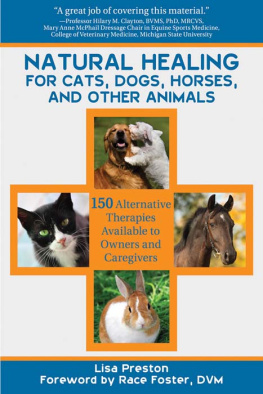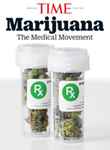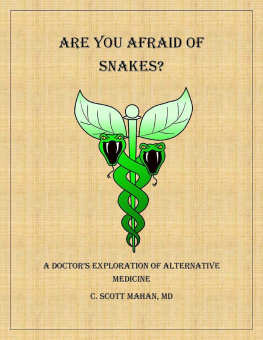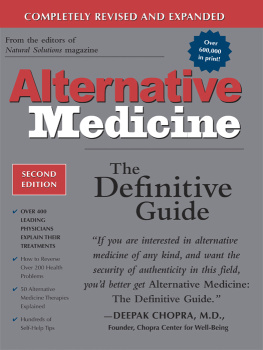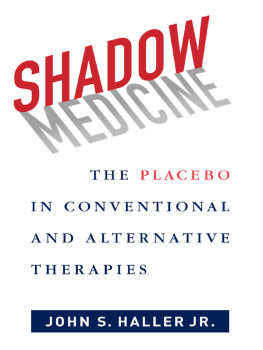Contents
About the Book
Alternative medicine is now used by one in three of us. Surrounded by an aura of unquestioning respect and promoted through uncritical airtime and column inches, it has become a lifestyle choice, with a global market predicted to be worth $5 trilion by 2050.
Suckers is a provocative and entertaining calling to account of social and intellectual fraud; revealing how alternative medicine can jeopardise the health of those it claims to treat, leaches resources from treatments of proven efficacy and is largely unaccountable and unregulated. In short, it is an industry that preys on human vulnerability and makes fools of us all.
About the Author
Rose Shapiro has written for newspapers, magazines and medical journals including the Independent, the Observer, Time Out, Good Housekeeping and the Health Service Journal. She lives in Bristol.
For Sam
A lesson in folly is worth two in wisdom
Tom Stoppard, Arcadia
Preface
We are witnessing an epidemic of alternative medicine. There are as many as one thousand different alternative therapies, most with little in common bar one rather important thing: theres no evidence that they work. From chiropractic to colour therapy, reflexology to reiki, such therapies are now used by one in three of us.
Alternative medicine is big business. Latest estimates put the total UK annual spend for Complementary and Alternative Medicine (commonly known as CAM) at 4.5 billion, a market which has grown by nearly 50 per cent during the last ten years.
As with all successful marketing, the world of CAM shows what can be achieved with nothing but a change of name. The same set of practices that was called quackery or fringe medicine in the mid twentieth century was renamed alternative medicine in the 1960s and 70s. The term complementary medicine was coined during the 1990s and now, inspired by the idea that alternative medicine can work alongside and therefore complement orthodox scientific medicine, all these therapies are bundled together as Complementary and Alternative Medicine, or CAM.
Further rebranding has given rise to the notion of integrated medicine. Heres where things are getting out of hand. In a free society every individual has the right to choose to do things they believe are health-promoting as long as they dont directly harm anyone else. But the aim of the integrationists, with Prince Charles as their standard bearer in Britain, is that in future we will all be treated with a mixture of proven, unproven, or disproven therapies and diagnostic techniques, provided by the state. Even more alarmingly, and infuriatingly for fact-favouring sceptics, survey after survey has shown that this approach is what a large proportion of patients want too.
What unproven and disproven therapies do I mean? To make things clear, lets have an alphabetical assortment: acupuncture, Alexander technique, applied kinesiology, aromatherapy, astrological medicine, autogenic training, AuraSoma, Ayurvedic medicine, Bach flower remedies, biochemic tissue salts, biofeedback, bioresonance therapy, biorhythms, Buteyko breathing, chelation therapy, chiropractic, colonic irrigation, colour therapy, cranial osteopathy, craniosacral therapy, crystal healing, ear acupuncture, energy medicine, herbal medicine, homeopathy, Hopi ear candles, holographic repatterning, Indian head massage, iridology, johrei, kombucha tea, light therapy, magnet therapy, metabolic typing, metamorphic technique, moxibustion, naturopathy, nutritional medicine, osteopathy, polarity therapy, radionics, reflexology, reiki, rolfing, shiatsu, therapeutic touch, thought field therapy, urine therapy, vibrational healing and zero balancing. Every one of these either uses diagnostic methods that have no proven, factual basis or involves unsubstantiated or disproven claims of effect and benefit. These remedies and therapies are set to play an increasing role in our health services but oddly, in the era of evidence-based medicine, there is little or no public challenge to their onward march.
Most of these quack treatments are simply ineffectual; such as homeopathy, for example, when there is no medicine in the medicine. Others are dangerous, either in themselves or because they may have been adulterated with uncontrolled amounts of powerful drugs like steroids or banned amphetamines.
Nowadays, even when we are not suffering from any specific illness, we are exhorted to strive for something more than the simple absence of disease: a state known as Optimum Health or Absolute Wellness. Optimum Health is a giant undertaking, requiring close reading of special books and newspaper articles, a variety of exclusion diets, internal cleansing practices and the use of a range of therapies from every culture, continent and historical period. Shelf after shelf in expensive wholefood shops like Fresh & Wild is stacked high with such remedies, together with so-called intelligent nutrition supplements. If you didnt know better you would think their wealthy clientele was on its last legs. The opposite is true, of course.
This is a subject about which I feel strongly. What I have learned during the research and writing of this book has only increased my sense of outrage and dismay at the widespread acceptance of alternative medicine and the growing status accorded to it. I mean to show you how alternative medicine puts our health at risk, leaches money and resources from the NHS, is largely unregulated and unaccountable, shortens the lives of people with serious illnesses and makes fools of us all. It is at worst a fraud and when we fall for a fraud our intellectual culture is undermined. We need to understand how and why this has happened, as well as what it says about us, the twenty-first century CAM consumers.
Chapter 1
Ancient and Modern and how the Me generation became the ME generation
THE UNIQUE SELLING point of alternative medicine is that it offers diagnostic systems and therapies that havent changed in thousands of years, with ancient wisdom offered as the source of its authority. But those who promote alternative medicine have a curiously selective approach to ancient wisdom, frequently reviving some of the least plausible aspects of our ancestors thinking.
An exploration of the history of medicine immediately exposes a crucial weakness in the philosophy of the CAM campaigners. It shows how they miss one of the most important lessons of history: that it was rejection of superstition and the development of scientific method which brought about a medicine of colossal benefit to humankind. As recently as one hundred years ago people in the West could only expect to live on average until their mid-forties, with infectious diseases killing half of all children before they were ten. Since then, there has been a dramatic increase in life expectancy, evidence that would suggest we are actually healthier than ever before. Now were likely to live into our eighties and nineties and our governments are beset by pensions crises, debates about retirement ages and the challenge presented by a growing proportion of the population being frail and dependent, plagued by the diseases of old age such as dementia. This new longevity has been made possible by a mixture of scientific medicine and improvements in sanitation, hygiene, living conditions and diet.
Next page

